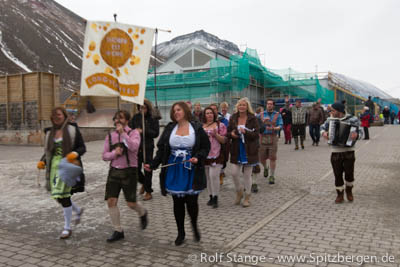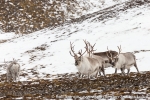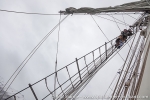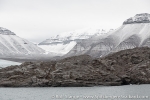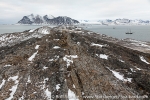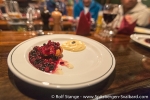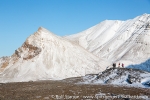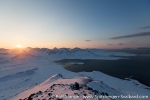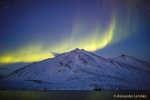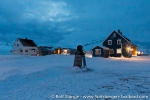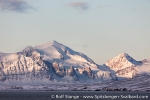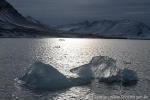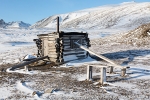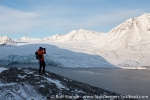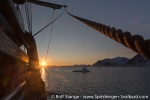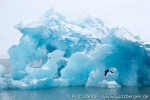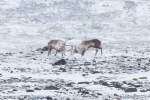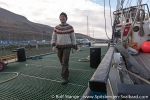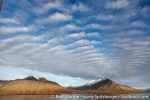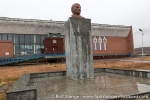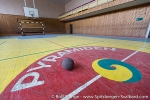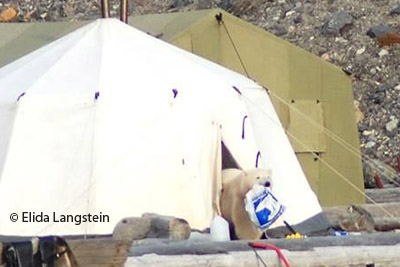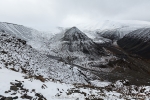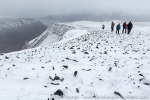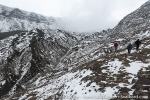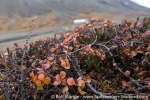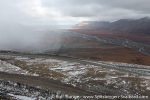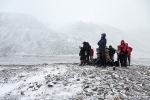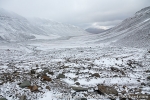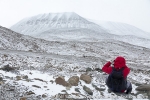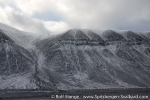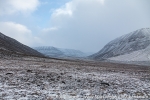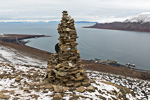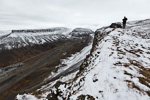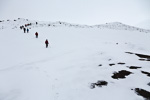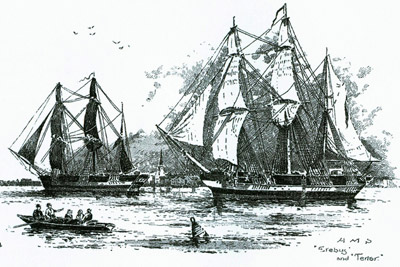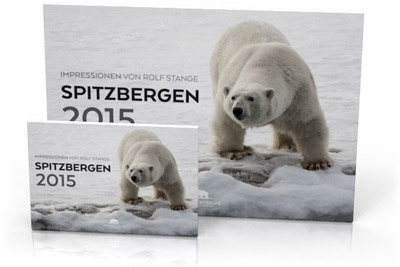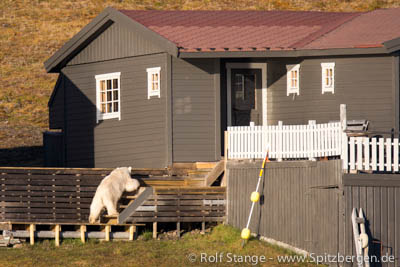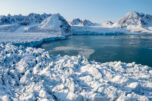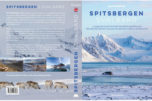-
current
recommendations- Liefdefjord
New page dedicated to one of Spitsbergen's most beautiful fjords. Background information and many photos.
- New Spitsbergen guidebook
The new edition of my Spitsbergen guidebook is out and available now!
- Liefdefjord
New page dedicated to one of Spitsbergen's most beautiful fjords. Background information and many photos.
Page Structure
-
Spitsbergen-News
- Select Month
- June 2025
- May 2025
- April 2025
- March 2025
- February 2025
- January 2025
- December 2024
- November 2024
- October 2024
- September 2024
- August 2024
- July 2024
- June 2024
- May 2024
- April 2024
- March 2024
- February 2024
- January 2024
- December 2023
- November 2023
- October 2023
- September 2023
- August 2023
- July 2023
- June 2023
- May 2023
- April 2023
- March 2023
- February 2023
- January 2023
- December 2022
- November 2022
- October 2022
- September 2022
- August 2022
- July 2022
- June 2022
- May 2022
- April 2022
- March 2022
- February 2022
- January 2022
- December 2021
- November 2021
- October 2021
- September 2021
- August 2021
- July 2021
- June 2021
- May 2021
- April 2021
- March 2021
- February 2021
- January 2021
- December 2020
- November 2020
- October 2020
- September 2020
- August 2020
- July 2020
- June 2020
- May 2020
- April 2020
- March 2020
- February 2020
- January 2020
- December 2019
- November 2019
- October 2019
- September 2019
- August 2019
- July 2019
- June 2019
- May 2019
- April 2019
- March 2019
- February 2019
- January 2019
- December 2018
- November 2018
- October 2018
- September 2018
- August 2018
- July 2018
- June 2018
- May 2018
- April 2018
- March 2018
- February 2018
- January 2018
- December 2017
- November 2017
- October 2017
- September 2017
- August 2017
- July 2017
- June 2017
- May 2017
- April 2017
- March 2017
- February 2017
- January 2017
- December 2016
- November 2016
- October 2016
- September 2016
- August 2016
- July 2016
- June 2016
- May 2016
- April 2016
- March 2016
- February 2016
- January 2016
- December 2015
- November 2015
- October 2015
- September 2015
- August 2015
- July 2015
- June 2015
- May 2015
- April 2015
- March 2015
- February 2015
- January 2015
- December 2014
- November 2014
- October 2014
- September 2014
- August 2014
- July 2014
- June 2014
- May 2014
- April 2014
- March 2014
- February 2014
- January 2014
- December 2013
- November 2013
- October 2013
- September 2013
- August 2013
- July 2013
- June 2013
- May 2013
- April 2013
- March 2013
- February 2013
- January 2013
- December 2012
- November 2012
- October 2012
- September 2012
- August 2012
- July 2012
- June 2012
- May 2012
- April 2012
- March 2012
- February 2012
- January 2012
- December 2011
- November 2011
- October 2011
- September 2011
- August 2011
- May 2011
- April 2011
- March 2011
- February 2011
- January 2011
- December 2010
- November 2010
- September 2010
- August 2010
- July 2010
- June 2010
- May 2010
- April 2010
- March 2010
- February 2010
- November 2009
- October 2009
- August 2009
- July 2009
- June 2009
- May 2009
- April 2009
- March 2009
- February 2009
- January 2009
- December 2008
- November 2008
- October 2008
- August 2008
- July 2008
- June 2008
- May 2008
- April 2008
- March 2008
- February 2008
- April 2000
- Select Month
-
weather information
-
Newsletter

| Guidebook: Spitsbergen-Svalbard |
Home
→ September, 2014
Monthly Archives: September 2014 − News & Stories
Oktoberfest in Longyearbyen
The famous Oktoberfest in Munich, said to be the world’s largest folk festival, has its little brother in Spitsbergen: On Thursday (25th September), the local Oktoberfest in Longyearbyen was opened with a little procession. The hard nights of drinking overpriced beer (but more than 120 kinds of it!) in an overcrowded tent, live music and presentations about beer were to follow until Saturday, inlcuding the choir of the Norwegian mining company Store Norske and the “Schnapskapelle”, a gathering of local musical talents exclusively brought together for the occasion.
The present author does not know any more about it, as he preferred the view over some silent valleys in gorgeous late September light at the time in questions.
The Longyearbyen Oktoberfest has been a regular event now for several years and it is safe to assume that you can join next year if you want to.
The procession to open the Oktoberfest in Longyearbyen.
Billefjord
Tue
23 Sep
2014
We entered Isfjord just in time. Not much later, others were feeding the fishes on the same route.
Some success on the quest for photographing old stuff at well-known places in new perspectives. A ship on land, a railway track going nowhere. Silent symbols for the fruitless efforts of man to steal nature’s treasures in the arctic. Why not just leave it?
- gallery anchor link: #gallery_596
Click on thumbnail to open an enlarged version of the specific photo.
Admittedly, we still wanted to, well, not to steal a treasure, but to take some longed-after memories home with us. Today’s peaceful way to make use of arctic nature treasures. We were lucky, and it worked. A final highlight of a trip that was quite different from what I had in my head before we set off. The weather ruled severely for quite some time. But looking back, in the sunny light of the days that were to follow, it all came together to shape a complete impression of the late summer arctic. A happy Antigua entered Adventfjorden in the evening.
Van Mijenfjord
Mon
22 Sep
2014
Sometimes, the back of a goose is enough for highest arctic pleasures. Certainly if this goose back is Gåskilen, the western outlier of Midterhuken, this wonderful mountain between Van Mijenfjord and Van Keulenfjord, 300 metres high, with amazing views over Bellsund.
A glacier in the sun for desert, and then another back, maybe of a dinosaur, it is big, anyway. Eight kilometres of hard limestone, a few hundred metres wide only, with frutti di mare as old as the hills. Sometimes, even 50 metres are enough for great views.
- gallery anchor link: #gallery_594
Click on thumbnail to open an enlarged version of the specific photo.
Then it was already time to celebrate a trip that turned out to be a great one, despite a tough start, weather-wise. Incredible how time is flying. But there is still a day to come.
Van Keulenfjord, Recherchefjord
Sun
21 Sep
2014
Did it ever snow during this trip? You have to think hard to remember how poor the weather had been just days ago. It is so beautifuly without even the tiniest fault that it is hard to imagine wind and snow.
Landings without difficulties or surprises make life easy. Fossils from old chapters of Earth history, series of uplifted beaches from geologically recent times, in comparison, highlighted by fresh snow. Meltwater streams from holocene glaciers falling down palaeozoic limestone layers, freezing to form ice columns. Rivers getting into winter mood.
A little fjord cruise in Van Keulenfjord gives us scenic beauty, but not the wildlife sightings we had secretly been hoping for. We get one of these during a short walk to a glacier lagoon later, making this walk even shorter, while another group is working its way up steep, snow covered slopes. Panorama view over fjords, valleys and glaciers. The hike against the gradient, snow and time was worth every calory burnt: the sun is just a few degrees above the horizon, still casting some pink light over the arctic land. The days of the midnight sun are definitely over. Now you have to keep an eye on the wrist watch and keep things in good normal schedules.
- gallery anchor link: #gallery_592
Click on thumbnail to open an enlarged version of the specific photo.
When the midnight sun turns into darkness, the northern lights start to paint their mysterious colours into the dark night sky. It was definitely worth staying at anchor during this clear night. Arctic light magic above the southern horizon.
Forlandsund
Sat
20 Sep
2014
As soon as someone presses the fairweather button, the world becomes a different one. Blue sky and sun. The low september sun that we had been longing for, now it is suddenly here and casts an amazing light over the whole scenery, the whole day long, not just for a few minutes before sunset as elsewhere. Mountains, glaciers, icebergs, everything is suddenly shining, an almost otherworldly beauty.
- gallery anchor link: #gallery_590
Click on thumbnail to open an enlarged version of the specific photo.
Kongsfjord
Fri
19 Sep
2014
The arctic isn’t a theme park, it is still wild, rough, the real thing. Anyone who didn’t believe it was convinced today. Seemingly endless strong winds and snow showers, taking all the views, turning any walk out on the icy deck into a little expedition. Even Krossfjord, reasonably well sheltered against westerly winds, did not tolerate a landing anymore today. An afternoon at anchor, well sheltered from the heavy westerly seas, the winds howling through the rigging, it feels almost like a wintering. Now, if the storm never ceases…?
But it did. This October weather came 4 weeks too early, but it did not last forever. Blomstrandhalvøya provided us with cold feed, a frozen waterfall, wind and snow, some lonely reindeer, and of course famous Ny London in drifting snow, the old houses covered with crusts of ice and snow, a unique view!
Kongsbreen is producing Spitsbergen’s bluest icebergs, at least today. Do you know this famous photo of a very blue, very weathered iceberg in Antarctica, with penguins? Same colour, just without penguins.
- gallery anchor link: #gallery_588
Click on thumbnail to open an enlarged version of the specific photo.
In the late afternoon, the heavy seas at the pier of Ny Ålesund had calmed down enough to let us go alongside there. So we could help the Kongsfjordbutikken to a late season turnover peak and then walk in Amundsen’s footsteps. Ny Ålesund in winter mood.
Krossfjord
Thu
18 Sep
2014
(Tuesday-Thursday, 16th-18th September, 2014) – Once we had finally left Adventfjord on Tuesday, the sun broke through the clouds – one of these amazing September-moments. How many times did we sail past Fugefjellet, and every time it is a view not to be missed, but this time it was something special, indeed.
- gallery anchor link: #gallery_586
Click on thumbnail to open an enlarged version of the specific photo.
Since then, the weather has also been something special. It has been especially shitty. Two lows passing one after another, less than a day between them (on Monday), well, this is not exactly what we had been hoping for. But we have managed several landings up north in Krossfjord, and now we are hiding in Kongsfjord, waiting for better times. And they will come, that’s for sure.
Pyramiden
Tue
16 Sep
2014
A visit to Pyramiden, the old Russian mining settlement, is always something special. Abandoned in 1998, but the piano is still ok to play. Well, kind of… the ball is still in the field, waiting to be kicked. The old houses are the best thing to do at the time being, better to be inside than outside in this kind of weather.
- gallery anchor link: #gallery_584
Click on thumbnail to open an enlarged version of the specific photo.
Let’s go north. We expect quite a bit of wind the days to come. So we hope we can reach Kongsfjord or Krossfjord before it is getting really windy. The autumn does not show itself from its really golden side these days. Fingers crossed for great sunsets and northern lights in some days!
Polar bear with Svalbardbutikken plastic bag
This snapshot is definitely amongst this summer’s better ones: A polar bear was stalking a camp of students in Billefjord for a while last week, until it was decided to evacuate the camp and let the bear do whatever it wanted to. On that occasion, Elida Langstein managed to get this photo of the polar bear leaving a tent with a Svalbardbutikken plastic bag in his mouth.
It is not known what exactly was inside the bag.
Polar bear with Svalbardbutikken plastic bag in a camp in Billefjord. Photo: Elida Langstein.
Source: Svalbardposten
Gruvefjellet & Adventdalen
Sat
13 Sep
2014
(13th-15th September 2014) – Early winter rather than golden autumn – also impressive in a way, when arctic nature is showing its forces with cold and strong winds. And when it is raining on top of it all, then it is the perfect day to visit the museums in Longyearbyen, you can always learn a lot in both of them. It is especially the Airshipmuseum that is always amazing. Incredible how much Stefano Poli and Ingunn Løyning have collected over the years, all their own initiative. You should have a rough overview of the expeditions of Andrée and Wellman, Amundsen and Nobile before visiting, otherwise the wealth of details may be confusing. But then it is a place where you can return countless times to learn and to be amazed.
Looking back and considering the rough weather, I am almost surprised myself how much we have done in these 4 days around Longyearbyen also. After the first, extensive tour over the snow-covered Platåberget on Thursday, we went up Gruvefjellet on Friday, enjoying views over the wide plateaux around Longyearbyen and down the valley, followed by a glacier walk across Larsbreen and a steepish descent down its moraine just before the whirling snow turned all views white and grey.
Meanwhile, the fossil collectors were quite successful on the neighbouring moraine of Longyearbreen.
- gallery anchor link: #gallery_582
Click on thumbnail to open an enlarged version of the specific photo.
Success also on Sunday in Endalen on the quest for the Dwarf birch. We haven’t seen this tree (yes, it counts as a tree, even if it does not look like it) on our trips before, as we travel mostly on ships and they don’t grow near the shore. We came just in time for some views over Adventdalen from the height of mine 7 before the snow drift settled in, and some hardy hikers even went into Bolterdalen in spite of wind and snow.
Now, the sky is blue again and it is time to board Antigua in the afternoon.
Plataberg
Thu
11 Sep
2014
Shortly we will continue with our travel blog. The next tour starts on 15 September at which time we will publish daily travel logs again, that is, if the satellite phone plays along regarding transmission of text and pictures. For now, Rolf has sent a us a picture gallery of a plateau-shaped mountain (platåberg). Webmaster Spitsbergen-Svalbard.com
- gallery anchor link: #gallery_580
Click on thumbnail to open an enlarged version of the specific photo.
Ship of Franklin-expedition found in Northwest Passage
This is the historical discovery of the year in the Arctic – at least: The Canadian government has announced to have found the wreck of one of the two ships of John Franklin’s expedition.
John Franklin was out to find the Northwest Passage with 2 ships, HMS Erebus and HMS Terror, and 129 men, sailing into the passage in 1845. Both ships and all men disappeared. Many expeditions were sent out to rescue Franklin and his men or to find out what had happened. This was a boost for geographical exploration in the Canadian arctic, but the fate of Franklin’s expedition was never fully resolved. After years, the first traces were found; it became clear that the men had left the ships, trying to reach safety, a hopeless effort considering the vast distances and the harsh climate. There were signs of cannibalism, but most must have died of starvation, cold and scurvy. Lead poisoning may have added to an overall health decline. Franklin had already died before the ships were deserted.
The 2 ships had been equipped with everything one could think of at that time, it was one of the largest arctic expeditions ever and its loss was a trauma for the British Royal Navy. The discovery of one of the 2 ships 169 years later is a sensation. It is so far unknown if it is the wreck of the HMS Erebus or the HMS Terror.
The Canadian government has put the search for Franklin’s ships on the agenda some years ago.
Franklin’s ships HMS Erebus and HMS Terror in the Northwest Passage (source: Wikimedia Commons).
Source: Spiegel Online
Spitsbergen calendar 2015
The new Spitsbergen calendar 2015 by Rolf Stange is now here, fresh from the printer and it can be ordered from now on. 12 impressions from Spitsbergen: around the island and through the seasons, encounters with wildlife, scenery, light and flowers from the polar night to the midnight sun.
As before, the Spitsbergen calendar 2015 is available in the handy A5 format and large in A3. Click here for more information, images and ordering.
The new Spitsbergen calendar 2015.
Longyearbyen Camping: season & info, virtual tour
Longyearbyen is not just the cheapest accommodation in Longyearbyen, but also one of the most popular places to stay, as you are in the middle of nature there: in good weather, the view across Isfjord is great. Reindeer, polar foxes and a range of different birds are regular guests, and if you are lucky, you can even see belugas near the shore, that happens several times every summer.
On a nice day in August, I shot a panorama tour which is now online, so you can walk across Longyearbyen Camping now on the internet. There is also a panorama of the campsite taken in the polar night, when it is obviously closed, but nevertheless a very interesting place to visit …
It has been a good summer with a lot of fine weather, and Longyearbyen Camping has done very well with about 2800 guest nights. As an experience, it is worthwhile to mention that you need to bring your own sleeping bag, insulation blanket and tent if you want to stay there. Longyearbyen Camping has limited amounts of rental equipment, but the capacity may be in full use in peak season. When guests come, as happened several times, without anything and without a reservation for rental equipment (or a “reservation” made very shortly before arrival), then bad luck may strike and nothing is available, which translates as: you don’t have a place to sleep. Not great. So: just bring your own stuff or get in touch with Longyearbyen Camping well in advance to make sure they have got what you need. And then: have a good time there 🙂
Screenshot of the new virtual tour of Longyearbyen Camping, high on the list of Longyearbyen’s most popular places to stay.
Polar bear roaming near Longyearbyen
A polar bear has been observed roaming around near Longyearbyen for more than a week. Since 21st August, the bear has been seen in Hiorthhamn, on the north side of Adventfjord, a few kilometres away from Longyearbyen, where more than 2000 people live.
There is a number of weekend huts in Hiorthhamn, and some of them have suffered damage by the polar bear, which is always looking for food, besides generally being a curious animal anyway. It has since been seen in side valleys (Mälardalen, Hanaskogdalen), and most recently in Adventdalen near Janssonhaugen, where it seems to have found a dead reindeer, securing food for some days. It is, however, not 100 percent certain that it is really one and the same polar bar.
There is significant traffic in all these areas: tourists are on tour there, and so are students and locals in their free time. Additionally, it is reindeer hunting season.
Everybody moving around on his own is reminded that potentially aggressive polar bears have to be expected anywhere and at any time outside the populated settlements. A suitable, heavy calibre weapon is necessary for tours even close to Longyearbyen. Additionally, a deterrent such as a signal pistol with special noise-making ammunition to scare polar bears away does not only make a lot of sense, to solve dangerous situations without doing harm to a bear, but it is also legally binding now to have a deterrent. Pepper spray is, however, not recommended by the authorities in Spitsbergen, although it can make an important contribution if used, for example, from the relative safety of a hut to get rid of a very curious or even aggressive bear without doing harm to it. It must, however, not be relied on as the only means of “safety”.
The polar bear near Longyearbyen has, so far, not been aggressive. Generally speaking, polar bears are usually not aggressive towards man, but there are exceptions to the role, such as a very hungry bear. Also in Pyramiden, a Russian settlement largely deserted since 1998, polar bears have been seen several times during the summer, also in central parts.
This polar bear has been roaming for more than a week near Longyearbyen. Here at a weekend hut in Hiorthhamn on the other side of the fjord.
Source: Svalbardposten
News-Listing live generated at 2025/June/15 at 05:03:02 Uhr (GMT+1)
